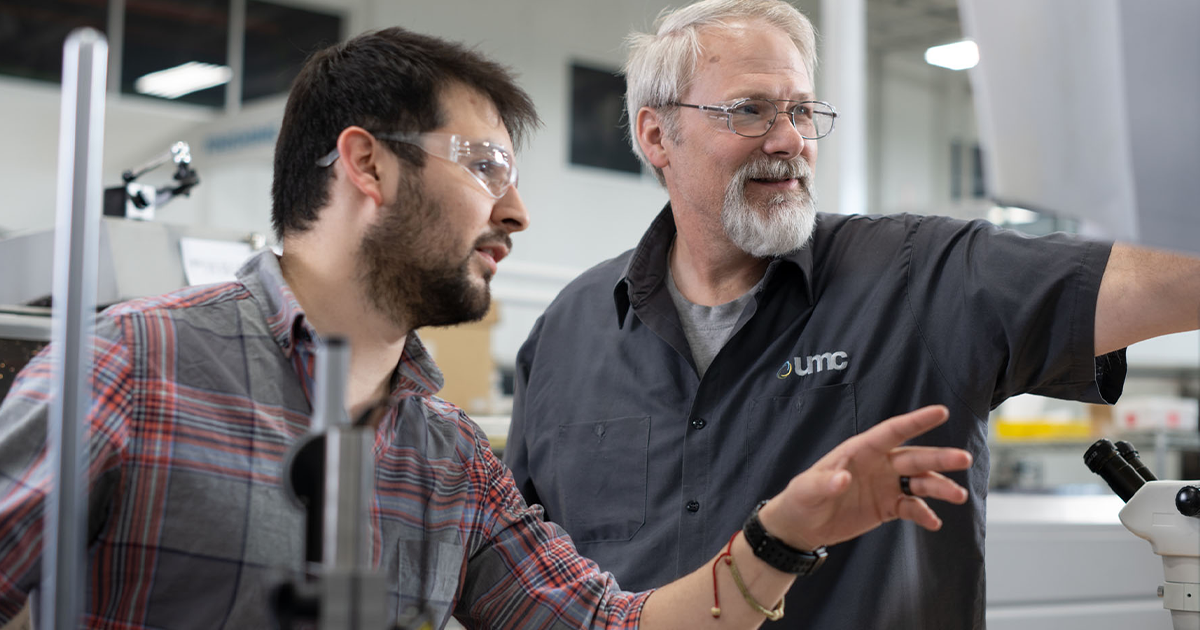Leveling Up: Machinists’ Trajectory at UMC

Our team of skilled machinists plays a leading role in creating the high-touch precision manufacturing parts UMC is known for. But, what exactly, does being a career machinist entail? We went to the source.
“Machinists maintain our reputation as a company creating parts and components with unparalleled quality, using creative solutions while exceeding expectations,” said Brad Cross, Director of Quality Services at UMC.
Just last year, UMC underwent a leveling exercise to articulate the various machinist roles and responsibilities at specific career stages. “In hiring full-time machinists, we typically start at a level one but offer positions up to level four,” explained Linnea Reilly, Human Resources Generalist, UMC. “Depending on their interests and abilities, our employees can stay on the machinist track or may move to engineering or programming.”
“A big part of jumping up in levels is the knowledge you gain and the work that you do. A lot of it comes with experience,” explained Don Bush, Machinist, UMC. “The more experience you have, the more you learn. The more familiarity you have with machining, the more expertise you have with the entire process and eventually, you come to understand every aspect of the parts you’re making.”
The levels of the UMC machinist career progression are outlined here:
- Production Operator: Individuals with no technical background or education, but a strong mechanical aptitude. They are paired with a supportive trainer and assist in different capacities to gain a variety of experiences at UMC;
- Level One: Individuals with machinist technical training or community college graduates; or this could include individuals joining UMC from another manufacturing-type environment with little to no machining expertise but who are eager to learn;
- Level Two: Here machinists have some experience and familiarity operating several machines in their area. While they handle technical setups, they’re likely not as familiar with the engineering process;
- Level Three: Well-versed, these seasoned individuals have expanded their knowledge beyond their area, assume added responsibility and often are tapped for mentoring and leadership opportunities;
- Level Four: These go-to leaders and experienced problem-solvers are adept with technical expertise and have broad knowledge of multiple areas; often they’re brought in for brainstorming sessions and creative approaches to production.
In addition to the four levels, explained Brad Cross, the team created a blueprint for growth and development. “We’ve outlined what’s required to move from a level two to a level three. And we’ve built development plans into our performance system so every employee on the floor has their own. Machinists work directly with their supervisor to identify key development areas such as goals, areas of focus, where they excel or any continuing education or classes they’re interested in pursuing.”